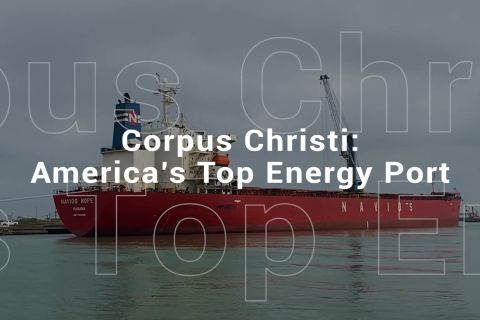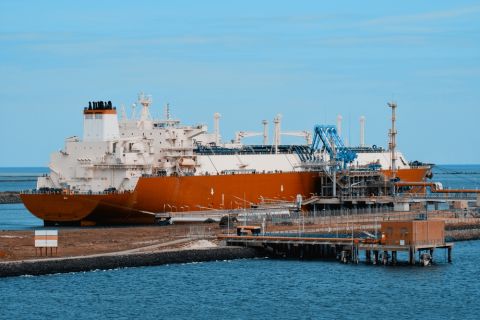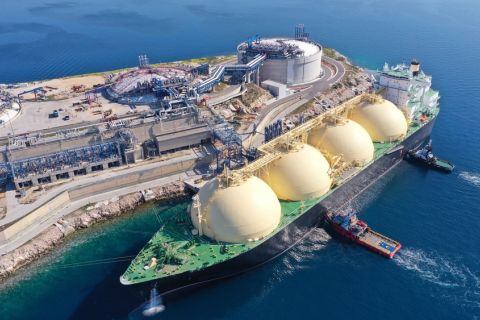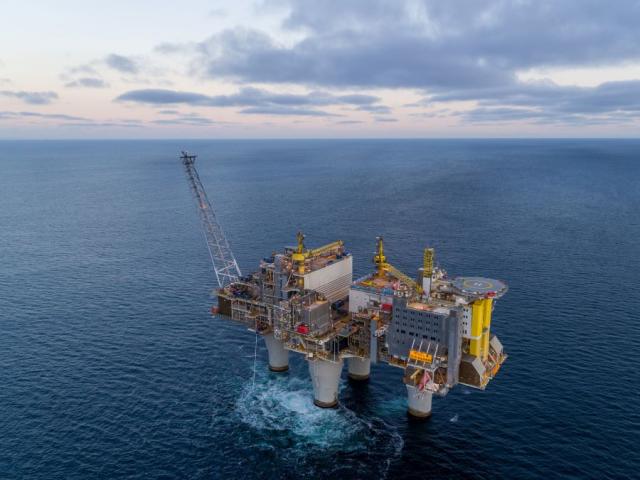
The Troll A platform in the North Sea. (Source: Jan Arne Wold, Elisabeth Sahl / Equinor)
Equinor reported on Feb. 9 a commercial oil and gas discovery of 17 MMboe to 47 MMboe of recoverable reserves at its Røver Sør prospect about 10 km from the Troll Field in the North Sea.
Because of its proximity to the Troll Field, Equinor’s Geir Sørtveit, senior vice president for exploration and production west operations, said the Røver Sør find is commercial.
The Transocean Spitsbergen rig drilled the discovery’s two wells in Norwegian North Sea license PL923 in about 350 m water depth.
According to license partner DNO, the discovery well and a follow-on appraisal sidetrack encountered hydrocarbons in three Jurassic Brent Group sandstone reservoirs.
The Norwegian Petroleum Directorate (NPD) said the primary exploration target for wildcat well 31/1-3 S was to prove petroleum in the Etive and Oseberg Formations in the Brent Group from the Middle Jurassic. The secondary exploration target was to prove petroleum in the Cook Formation from the Early Jurassic. Well 31/1-3 S was drilled to a vertical depth of 3,558 m below sea level and a measured depth of 3,568 m. The well was terminated in the Johansen Formation from the Early Jurassic.
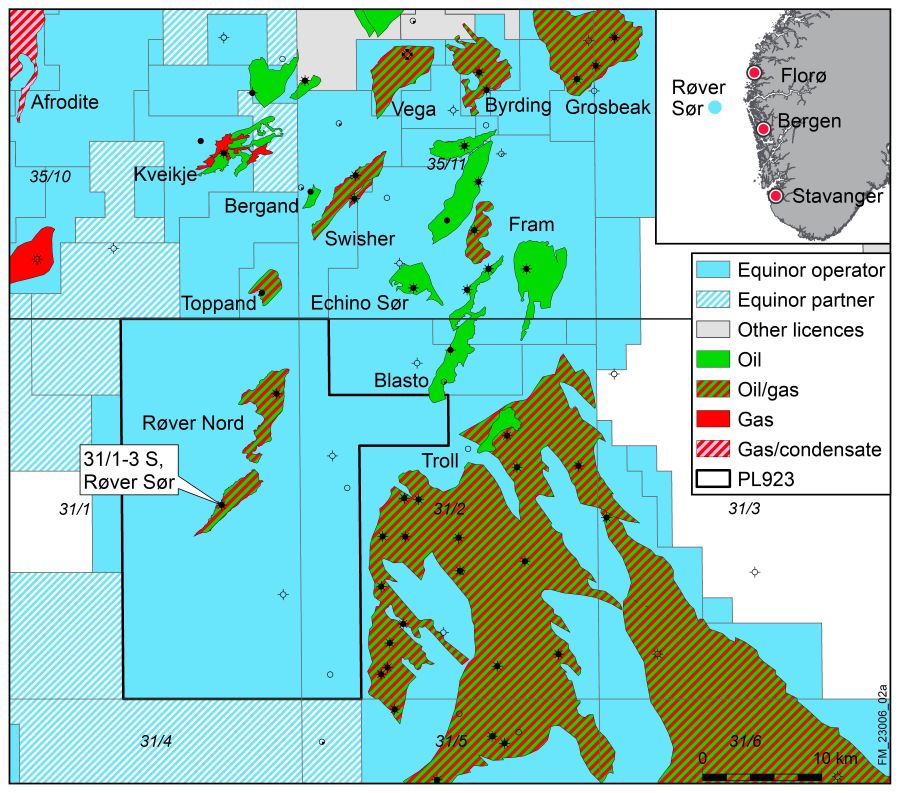
Well 31/1-3 S encountered a gas column of about 80 m in the Tarbert and Ness Formations and an oil column of around 50 m in the Ness, Etive and Oseberg Formations. About 20 m was in sandstone layers with poor to moderate reservoir quality in the Tarbert and upper part of the Ness Formation, and around 65 m in sandstone layers with moderate to good reservoir quality in the Ness, Etive and Oseberg Formations. The Cook Formation was water-filled and contained sandstone with moderate to good reservoir quality.
The oil/water contact was encountered at a depth of 3,227 m below sea level in the Oseberg Formation.
The NPD said the objective of appraisal well 31/1-3 A was to delineate the discovery made in the Brent Group in well 31/1-3 S in January 2023. Well 31/1-3 A was drilled to a vertical depth of 3,368 m below sea level and a measured depth of 3,791 m. The well was terminated in the Drake Formation.
Well 31/1-3 A encountered an oil column of about 20 m in the Ness Formation, with sandstone layers of around 30 m with moderate to poor reservoir quality in the lower part of the Ness Formation. The oil/water contact was encountered at 3,211 m below sea level in the Ness Formation.
The wells were not formation-tested, the NPD said, but extensive data acquisition and sampling have been carried out.
This find is Equinor’s seventh in the area since fall 2019.
The previous six discoveries are Echino Sør in 2019, Swisher in 2020, Røver Nord and Blasto in 2021, and Toppand and Kveikje in 2022.
Equinor reported uncertainty around the size of the discoveries but said an average of the various estimates gives a total volume of around 350 MMboe, corresponding to a medium-sized Norwegian oil or gas field and the size of the Aasta Hansteen field in the Norwegian Sea.
“Equinor has started field development projects to coordinate the development of these discoveries by utilizing existing infrastructure in collaboration with our partners. This discovery will be part of this work,” Sørtveit said.
Equinor operates PL923 on behalf of partners DNO with 20%, Wellesley Petroleum and Petoro.
Equinor and DNO said the next exploration well in this area will be Heisenberg, and Equinor said it expects the results of that well to be ready in March. Heisenberg is in PL827S, which Equinor operates with 51% interest while DNO holds 49% interest.
Recommended Reading
The Jones Act: An Old Law on a Voyage to Nowhere
2024-04-12 - Keeping up with the Jones Act is a burden for the energy industry, but efforts to repeal the 104-year-old law may be dead in the water.
Global Energy Watch: Corpus Christi Earns Designation as America's Top Energy Port
2024-02-06 - The Port of Corpus Christi began operations in 1926. Strategically located near major Texas oil and gas production, the port is now the U.S.’ largest energy export gateway, with the Permian Basin in particular a key beneficiary.
Hirs: LNG Plan is a Global Fail
2024-03-13 - Only by expanding U.S. LNG output can we provide the certainty that customers require to build new gas power plants, says Ed Hirs.
CERAWeek: Energy Secretary Defends LNG Pause Amid Industry Outcry
2024-03-18 - U.S. Energy Secretary Jennifer Granholm said she expects the review of LNG exports to be in the “rearview mirror” by next year.
The Problem with the Pause: US LNG Trade Gets Political
2024-02-13 - Industry leaders worry that the DOE’s suspension of approvals for LNG projects will persuade global customers to seek other suppliers, wreaking havoc on energy security.


